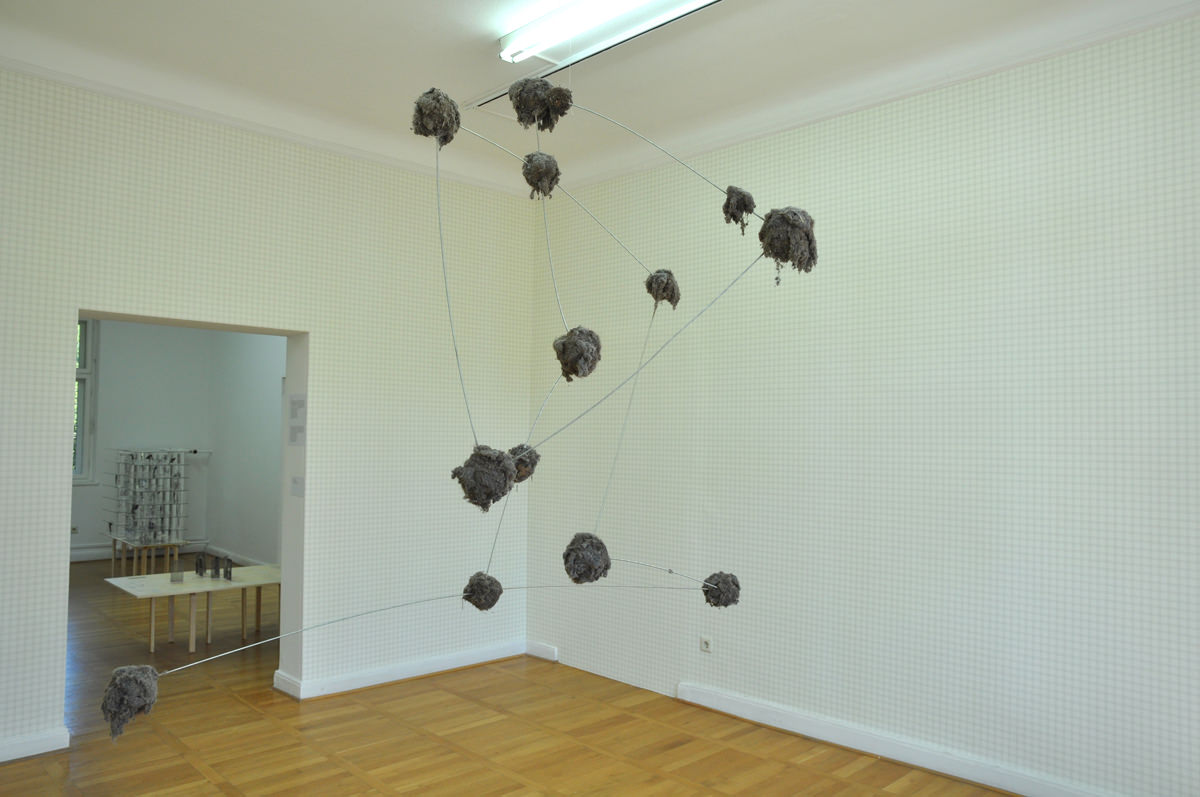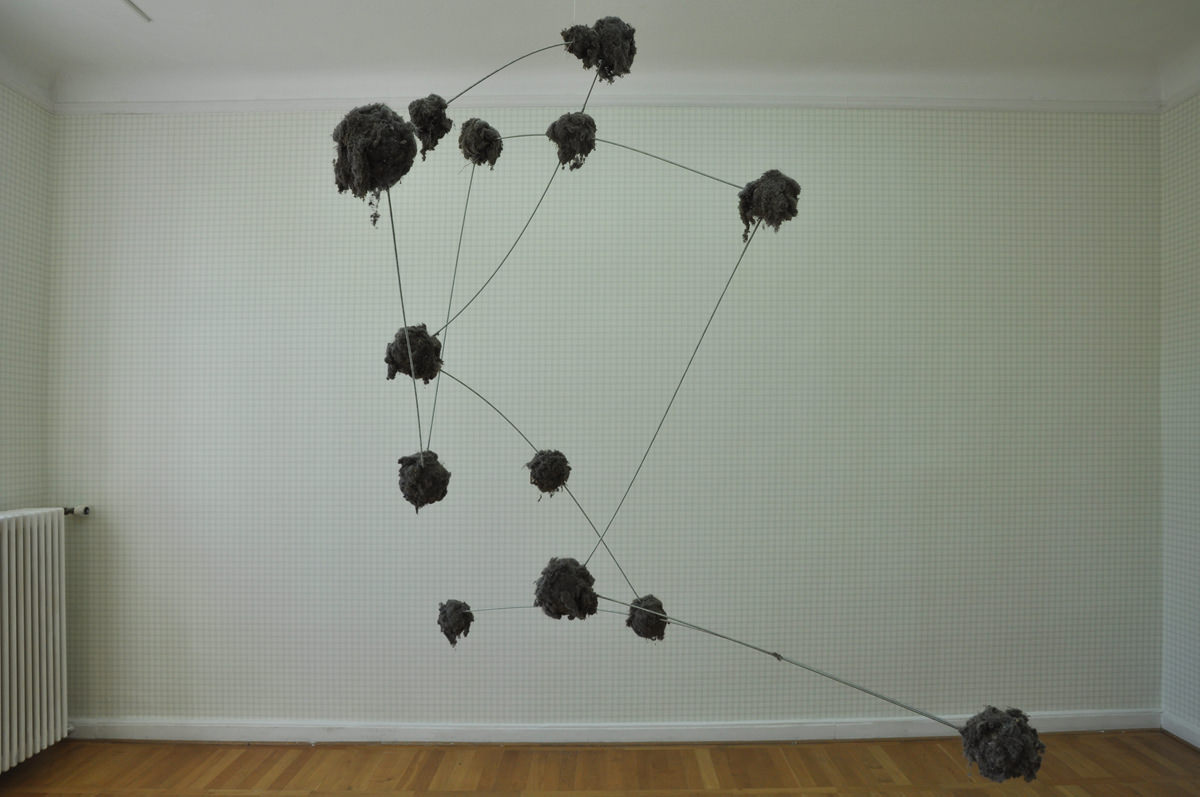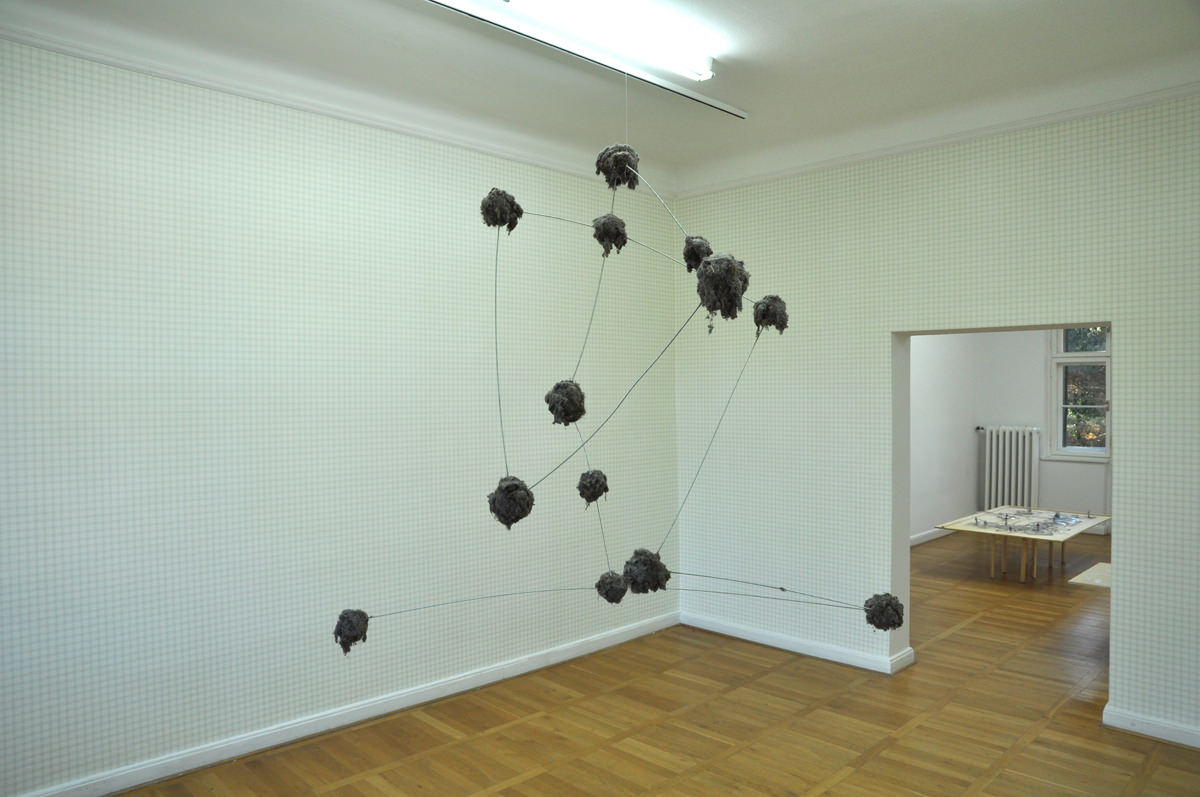Dust
Dust is a mobile, a hanging construction consisting of rods connected to one another from which other, smaller objects are suspended. Such formations that seemingly negate the laws of gravity were realized for the first time around the year 1930 by American sculptor Alexander Calder who used wire for his works. Light materials are naturally common among mobiles, but William Engelen utilizes an extremely light substance: dust. Even the fluff compressed in a vacuum cleaner bag weighs barely anything at all. Clumps of dust can recall balls or planets, as Big Bang, the title of this work, already suggests. However, when we gaze at the constellations of stars in the sky or their depiction in astronomic models, we rarely get a sense of the actual mass of the planets. For us terrestrials, when it came to the moon, this only became concrete when we obtained detailed pictures of its surface. It is, however, entirely possible that distant planets, in remote regions of the universe, should they ever be reached by mankind or inspected from close up, will literally disintegrate into dust. Then they will have left us in the dust, as it were, with no bang at all. To prevent this from happening with Engelen’s mobile, the dust surface needs to be regularly renewed, an ironic reversal of the customary daily efforts undertaken to remove the perpetually collecting dust. Even if the title of the dust mobile refers to the beginning of all that exists, the fragile work can also be read as alluding to the transience of all life, to the fact that, in the end, all things must turn to dust. As a vanitas symbol in this sense, the mobile would be a still-life – again a contradiction not entirely without irony.
Ludwig Seyfarth






